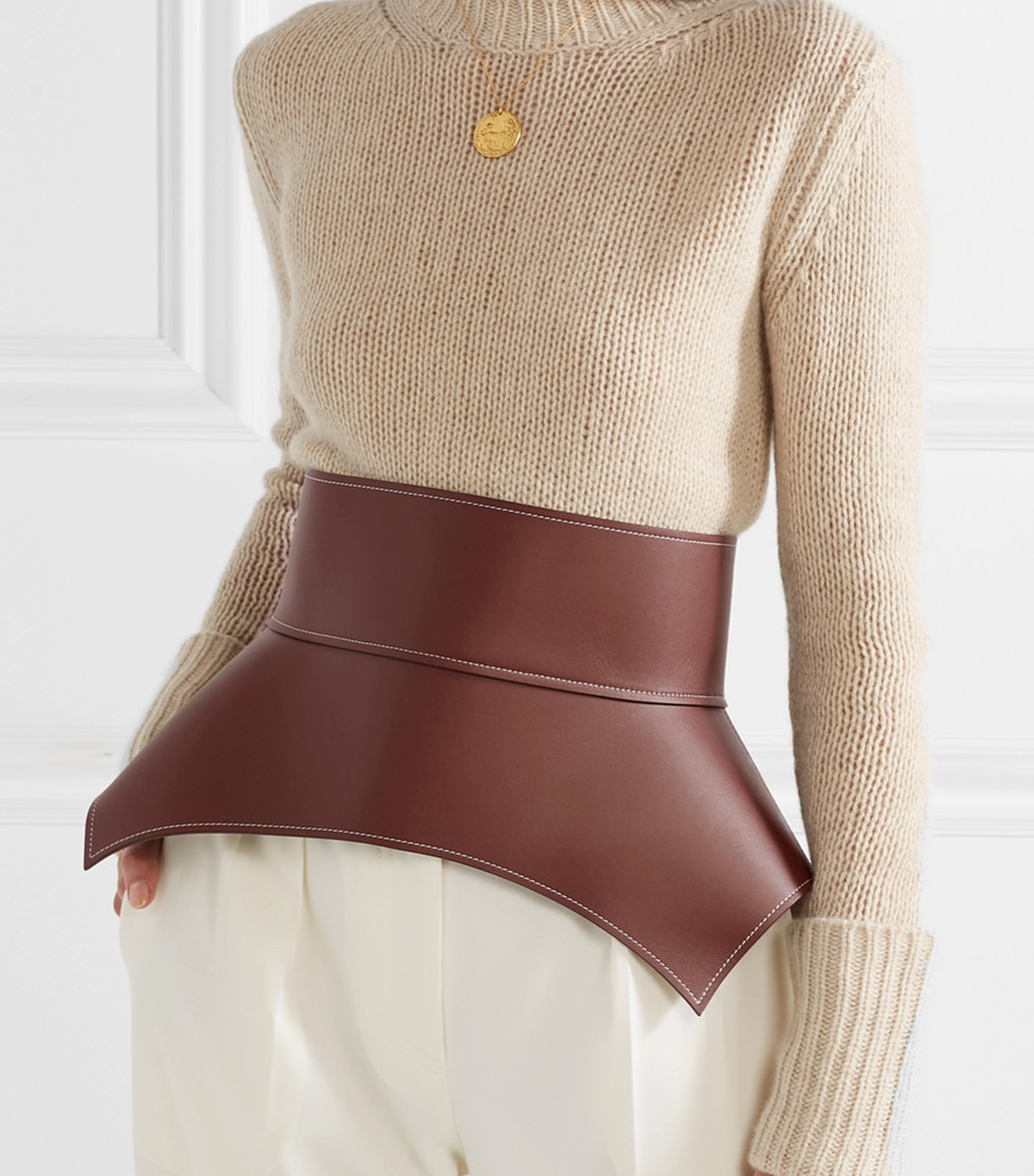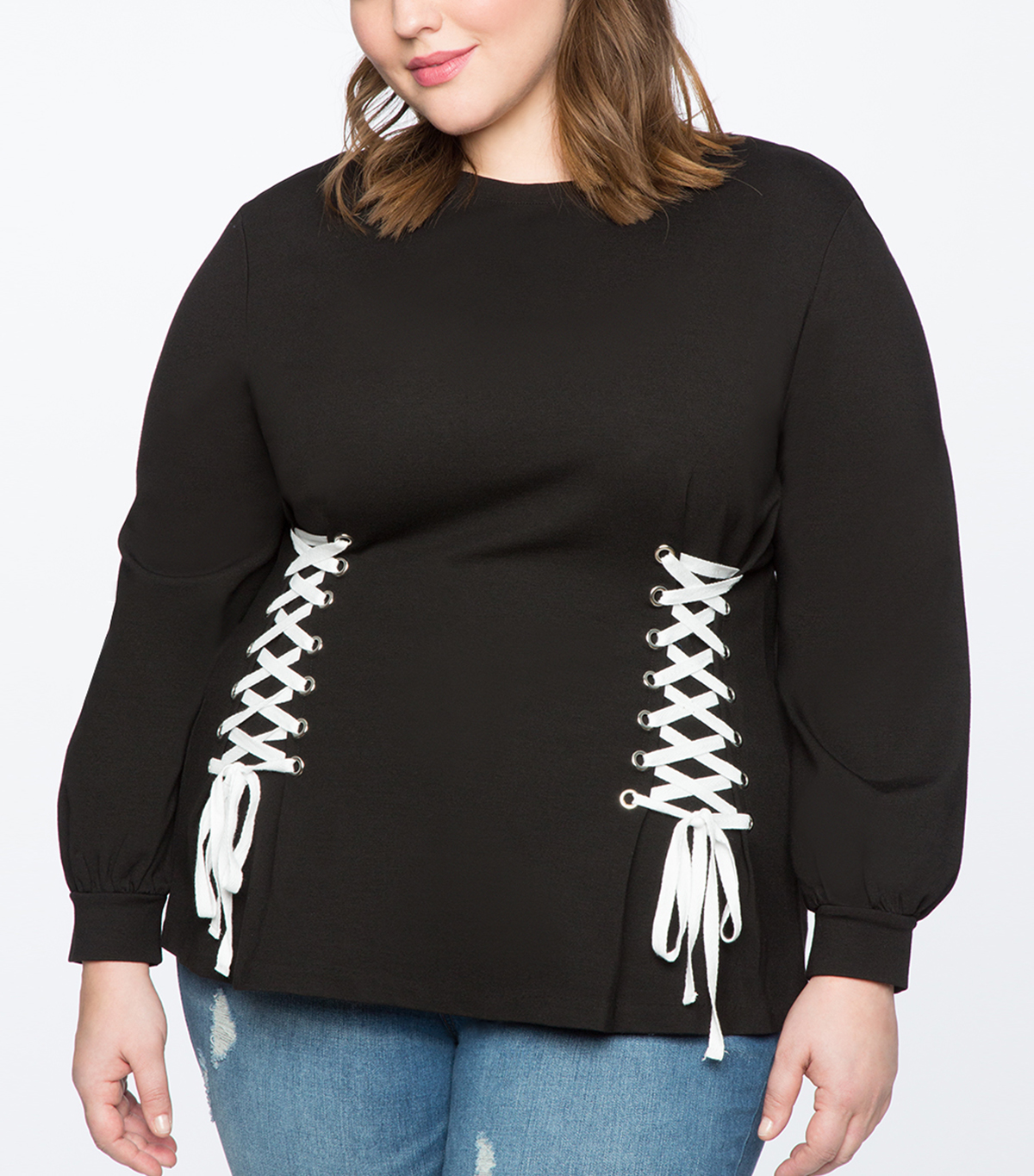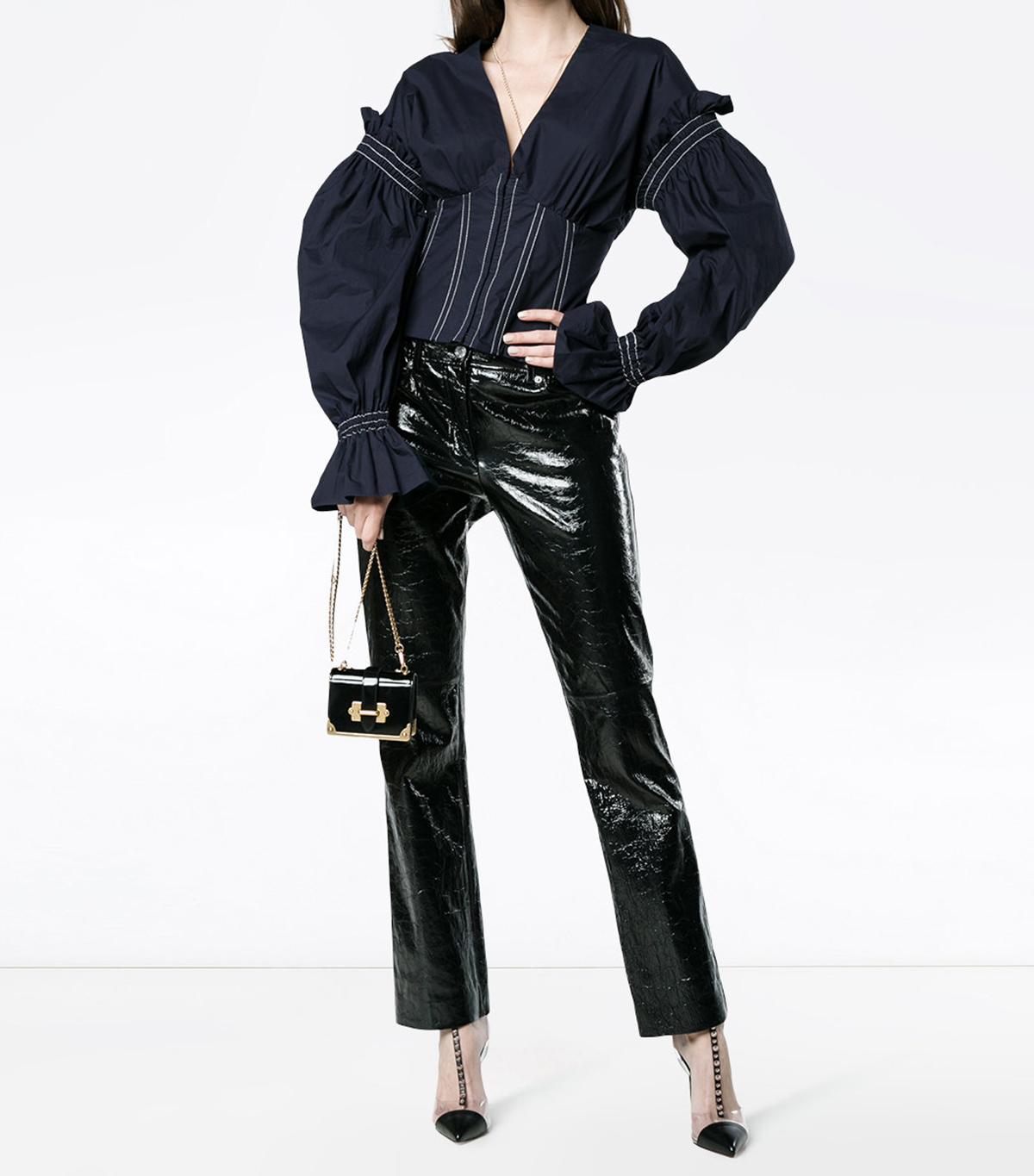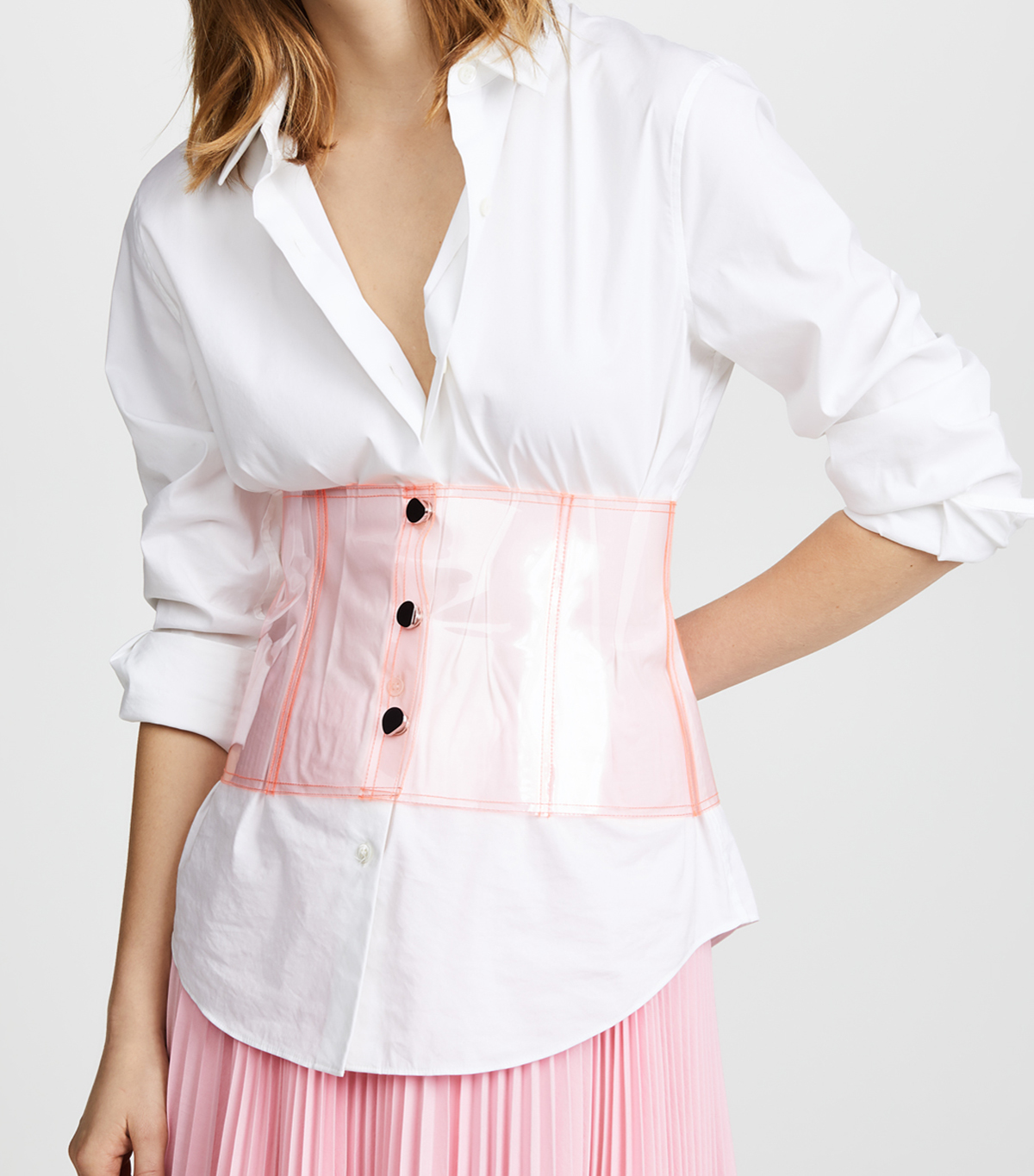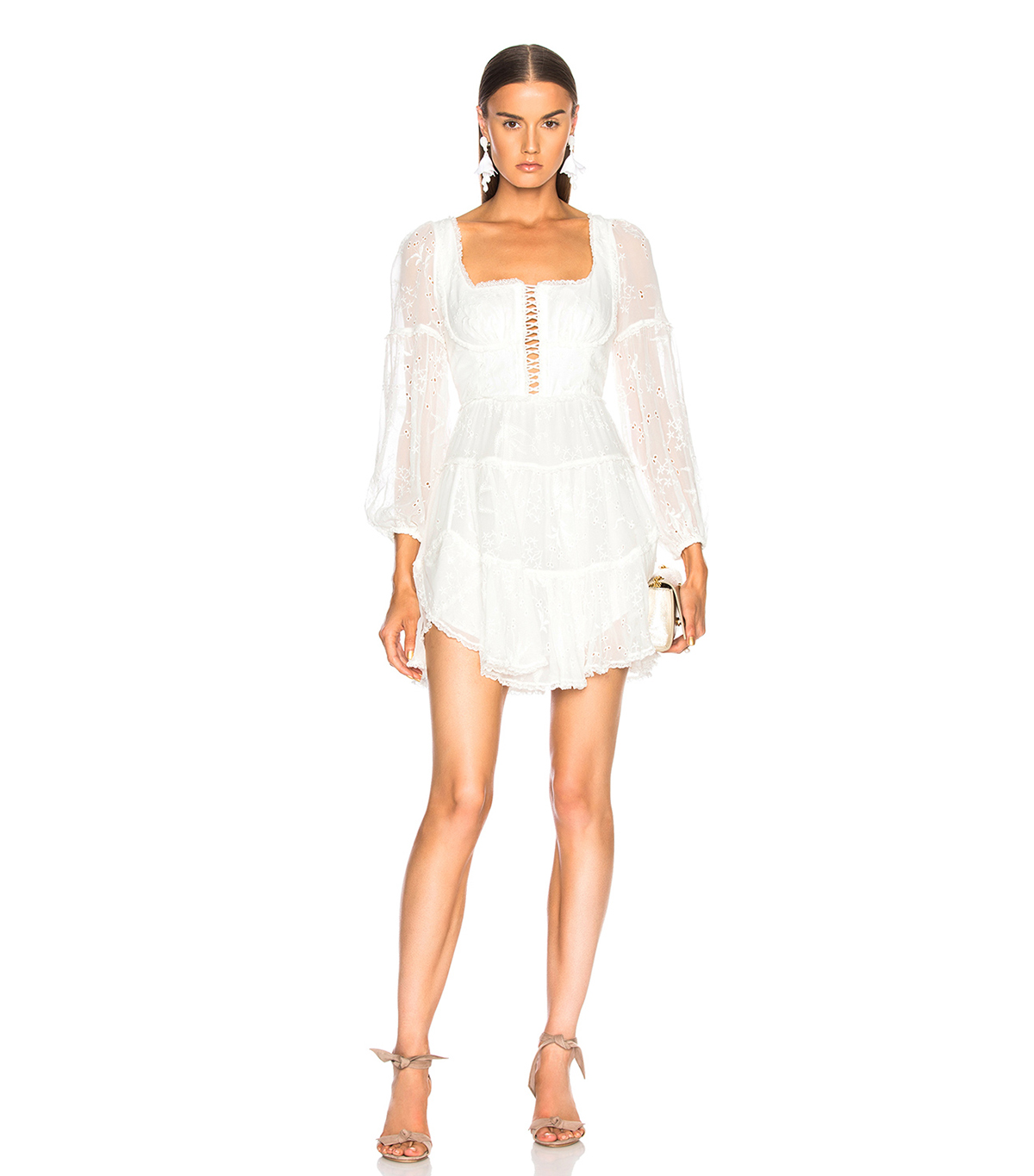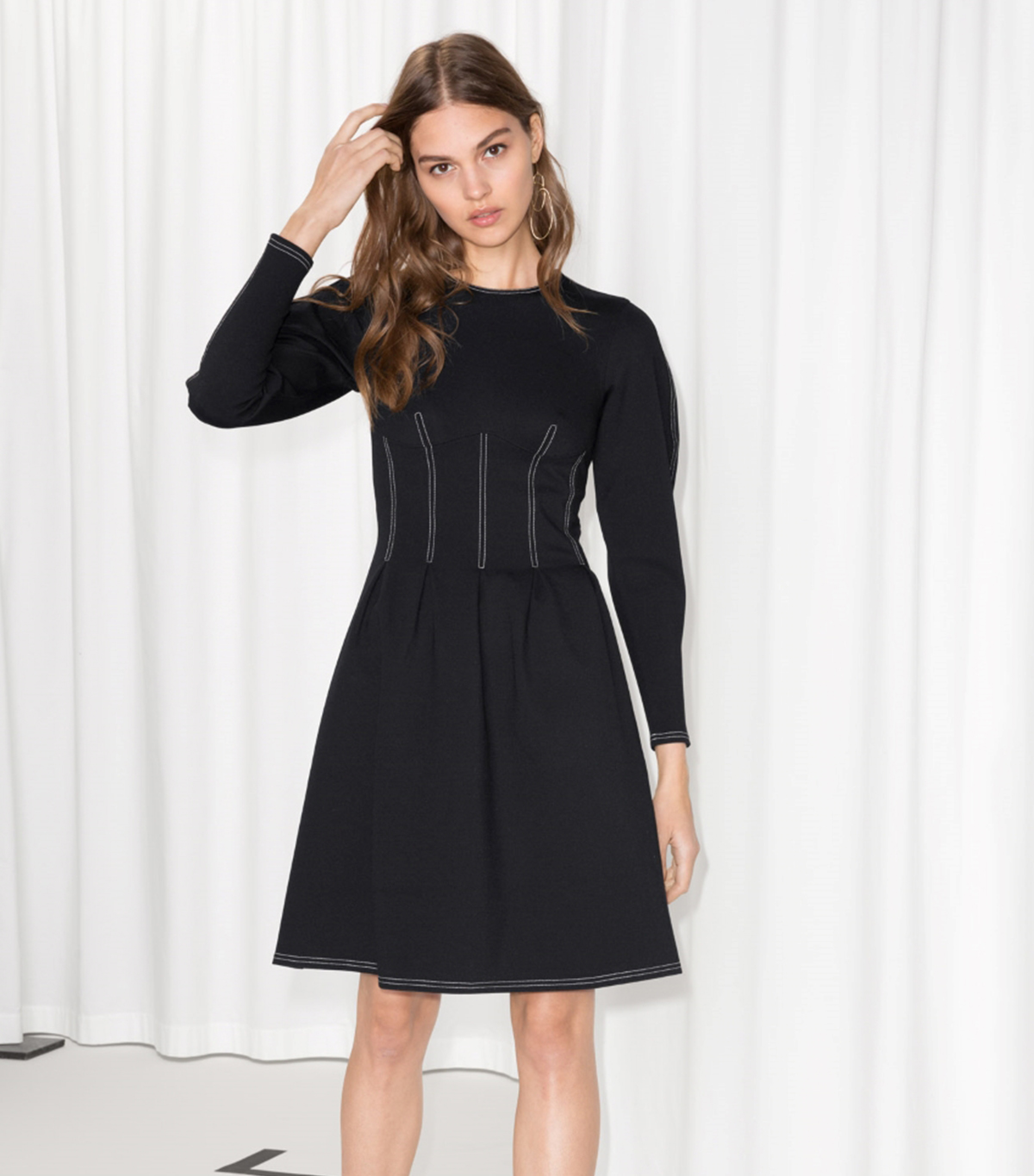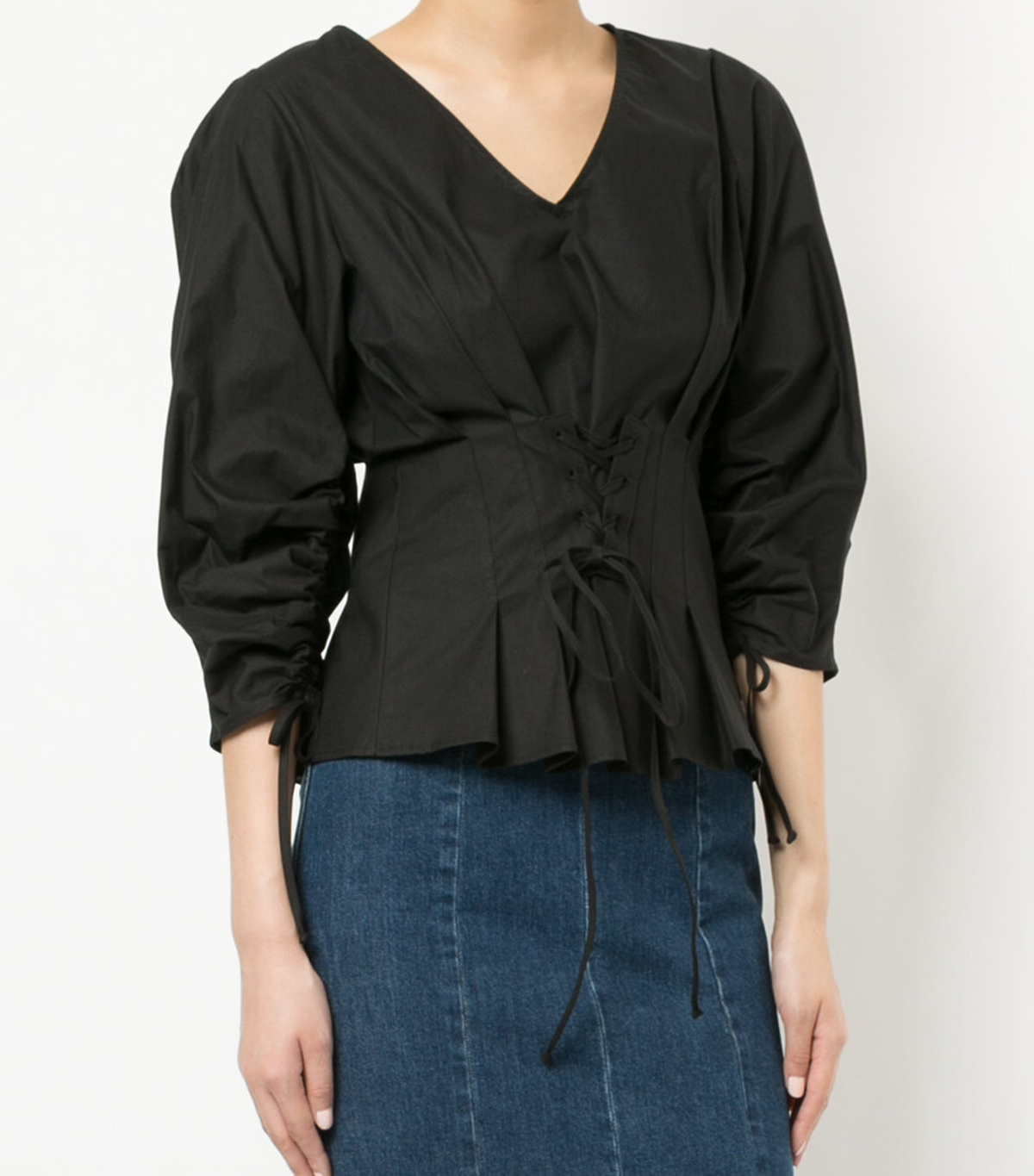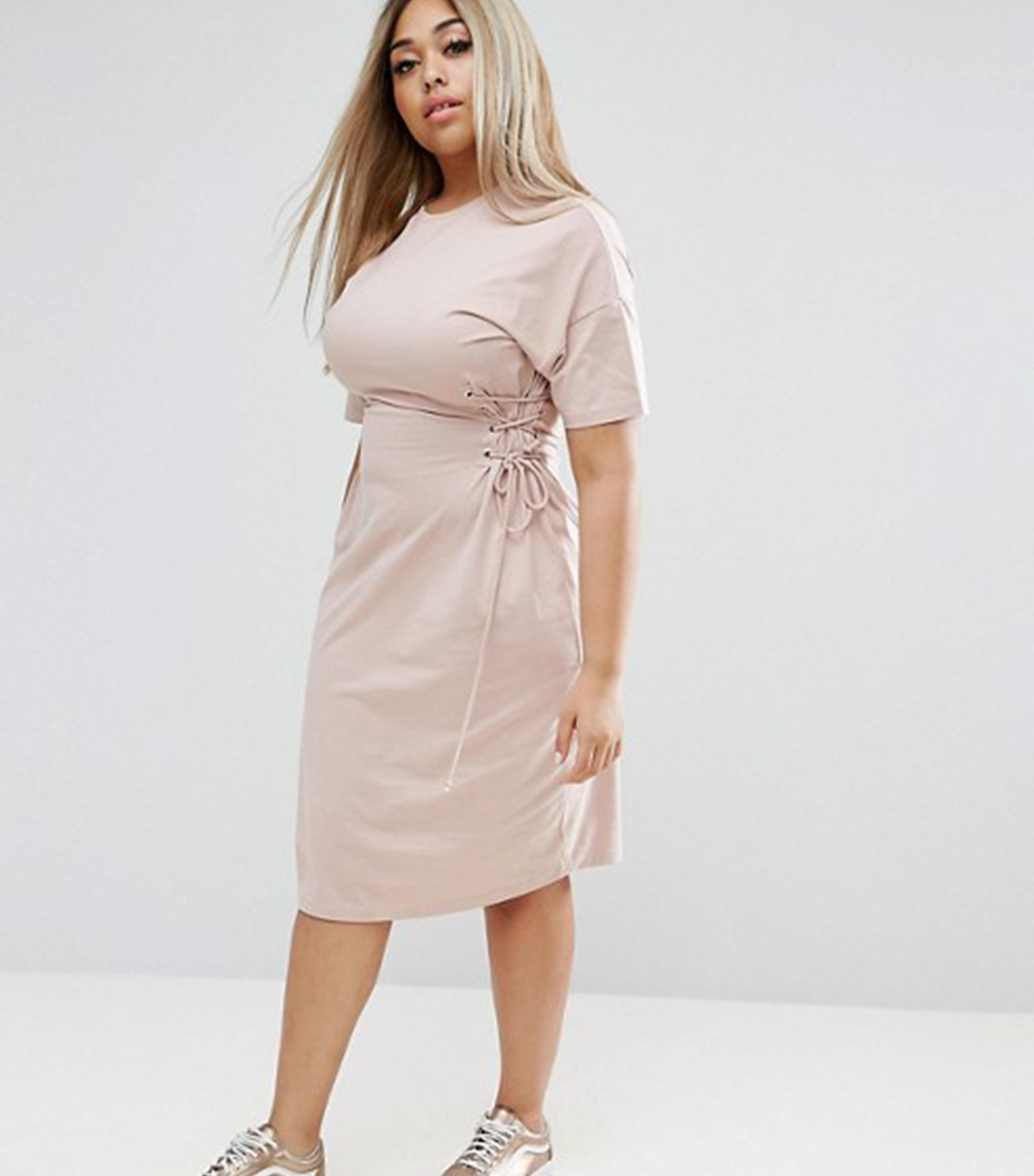Can We Wear the Corset Trend and Still Be Feminists?
Even now, in 2018, women continue discovering new ways to own their power. In fact, it’s a constantly exciting time to experience. Of course, being the fashion editors we are, it’s our duty to consider how this all plays out in how we get dressed. After all, clothing is the exterior shell with which we arm ourselves every day, and if the all-black #TimesUp dress code at the Golden Globes taught us anything, it’s that what we wear can be a powerful tool in our fight for equality and justice. Trends can matter.
So what happens when a fashion item with as layered a history as the corset circles back in vogue? From simple lace-up panels adoring cotton tops and dresses alike to the wide waist belts we saw everyone wearing over jackets and coats this winter, the corset’s modern influence is hard to ignore. It can’t be forgotten that the original garment was defined by its physically constricting shape and imposing social rigidity, but we do we draw a line between what women wore in 1618 and 2018? If you clicked into this post hoping for an answer to the question at hand—Can we wear corsets and still call ourselves feminists?—my initial conclusion is yes: We can indeed reconcile being an advocate for gender equality today while wearing a trend that references the corset’s constricting history.
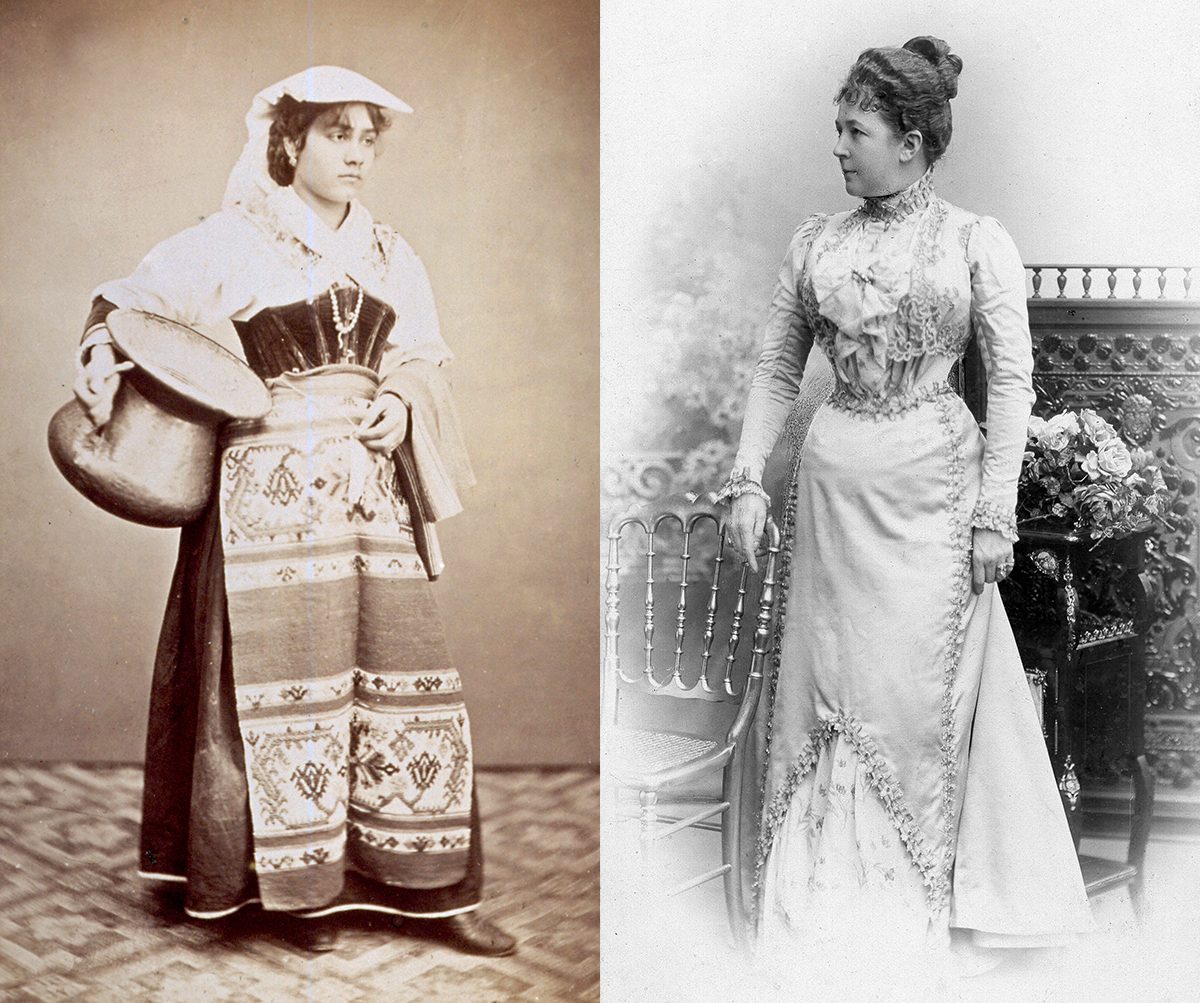
Here’s the thing: Wearing corset shapes today is completely a choice, and we should celebrate the fact that this choice (all our sartorial choices, in fact) are wholly, unabashedly our own. It was not always the case for women’s clothing. While trends dictate what most people will gravitate toward at any given time, there’s no denying that the clothes we pick out each morning signal to the world our own personal values, not those of societal restrictions, and that is something to celebrate. As women, we were not always given this freedom, and there’s no example that illustrates this better than the corset.
“Any respectable woman had to wear it in public, to a dance, anywhere where propriety maintaining image was important,” according to Valerie Steel, director of The Museum at the Fashion Institute of Technology. “It was ultimately clothing for elite women, though even working women would strive to wear corsets.” The waist-defining structure became such a standard of dress that anyone who emerged in public sans corset was seen as existing on the fringes of society, Steel shared. This kind of immense social pressure to wear the garment is what makes it problematic.
Corsets weren’t just figurately oppressive, either. If you’ve made it through the first 20 minutes of Pirates of the Caribbean, you’ve understood the pain Elizabeth Swann (Keira Knightley) endures while her maid cinches the laces of her bodice to impossibly tight lengths. Historically, corsets were either incorporated into the bodice or worn separately underneath a dress, according to Steele: “As the shape changes, you could say that it creates a smaller waist in comparison with the hips,” to put it lightly. By creating an unnaturally tiny waist, corsets created the illusion of an exaggerated hourglass shape, crushing bones and squeezing the air out of the wearer’s lungs, all for the sake of appearing “presentable” in public. (If you made it 30 minutes into Pirates of the Caribbean, you also witnessed Swann fainting as a result of that aforementioned corset.)
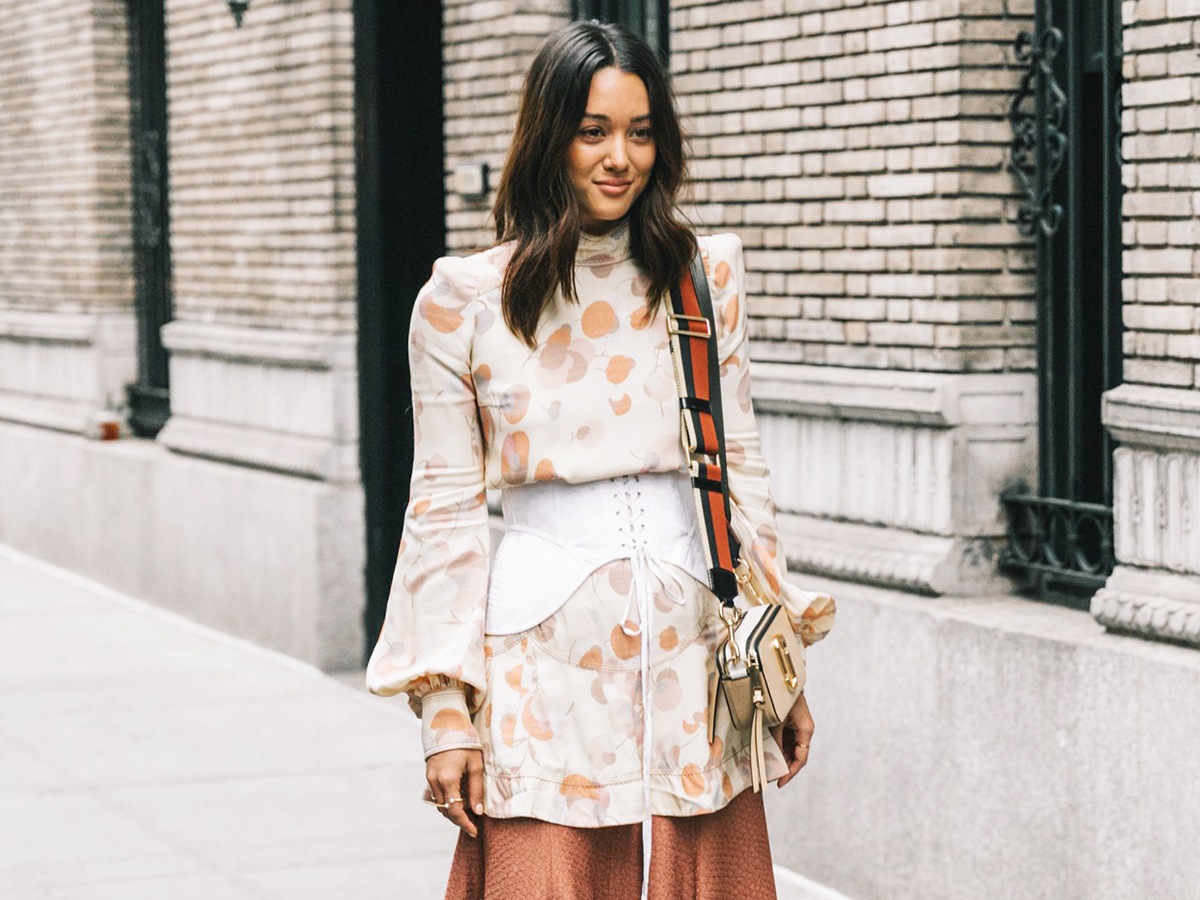
It’s safe to say that our collective society has progressed considerably since the era that produced the original corset. Why, then, did we decide to reach back in time and inform our fashion with the same structured bodices? I think when worn in 2018, the corset actually subverts its original exploitation of the female figure. So you’re wearing a waist-cinching belt over your blazer? That’s actually a power move, as this choice was made outside of pressure or obligation to uphold any standards set forth before you.
The bottom line is this: When you put on any garment and you choose to dress for yourself and only yourself, you are owning your power. If you are getting dressed with others in mind or forming yourself to a certain standard you’ve identified as necessary to adhere to, you’re inherently giving up that power. So let’s all stand behind our clothing choices fearlessly and without apology, shall we? This year more than ever, clothing can be political.
Shop the trend piece in its many iterations:
Armed with this knowledge, we hope you’ll go forth to wear the trends and pieces that make you feel at your most powerful.
Anna is an NYC-based senior fashion editor who has been a member of theBest Knockoff Luxury Clothing team for over seven years, having begun her career in L.A. at brands like Michael Kors and A.L.C. As an editor, she has earned a reputation for her coverage of breaking trends, emerging brands, luxury shopping curations, fashion features, and more. Anna has penned a numberBest Knockoff Luxury Clothing cover interviews, including Megan Fox, Julia Garner, and Lilly Collins. She also leads the site’s emerging travel vertical that highlights all things travel and lifestyle through a fashion-person lens.
